Recreating a recreation
Recreating what we do with advanced technology using less sophisticated means may help us understand how the technological advances actually expand our total range of capabilities.

I have always been interested in trying to recreate things with as little elements as possible, and as low-tech as possible, as a way to understand better what we do. The fascination for technology is something that has walked along with me, ever since my late brother, 4 years older than me, drew his sprites to code them up in Basic in our ZX Spectrum back in 1982 (yes, now you know I have an age). Fast forward to our first sound card (AdLib, anyone?) when I composed my first tunes, or using POV-Ray (it is still out there!) to emulate the things I saw when I could catch a glimpse of the works presented at SIGGRAPH (Spain's public television would sometimes run a program with that - no internet to see that type of content back in 1990). I mean, how could you not try to create a render of a shiny ball, as shiny as those marbles you had been playing with in your earlier years? How could you not try to follow the steps of Walter/Wendy Carlos when he/she recorded Bach with a Moog when the Moog came to be? It seems native to us humans to try out everything new, in a drive towards exploration that is a consequence of... being human?
Anyway. As these technological capabilities found their way into society, the arts and every aspect of our lives in one way or another, I kept trying to do those same things with my hands, or with any means other than the new. What is it that we only do with the new? What is clearly enabled by the new technology and there is absolutely no other way to do it? That is, how does the new technology effectively expand our total space of possibilities? I have written about the total cognitive space as the total set of capabilities that one given system has, and it is a topic that I try to research with some of my artistic explorations.
With the recent wave of interest in digital art due to the NFTs and all that goes along with that, a distinct style of lavish renders and cool lighting effects has shown up among the preferred styles within this movement. I thought that it would be interesting to have a go at that, minus the GPUs, minus the rendering engines, minus the raytracing that I keenly embraced back in the early 1990s. That is, can I make a recreation of something that is in the middle between creation and recreation, the renders we see every day?
So I took out a basic set of tools: a camera, a tripod, two pieces of broken glass I had picked up from the streets with my little girls (to them they were diamonds or pieces of ice to play with), a torch and that was it. I took several photographs to create a stop motion video, much in the same way as my brother would create movement in the ZX Spectrum by drawing every frame / sprite of a character in sequence. To add more interesting lightning effects, I composed 5 frames into one with varying blend modes using Processing (ok, I used a bit of "modern" technology there, but stayed away from fancy 3D engines). The resulting works are presented here: 4 stills and one video for which I composed the music (played on a piano... ok, connected via MIDI to my laptop, since I don't have a recording studio to properly record the different instruments). It was nice to see limitations or rather interplays of technology creating unexpected effects: the frequency of the light source (a LED torch) created these interference patterns / banding you can see when coupled with a shutter speed in the camera that is faster than said frequency. If you slow down the shutter, though, the banding disappears. Well, that's one place where technology is expanding our capacities.
poor man's render i (available here as an 1/1 objkt in Hicetnunc):
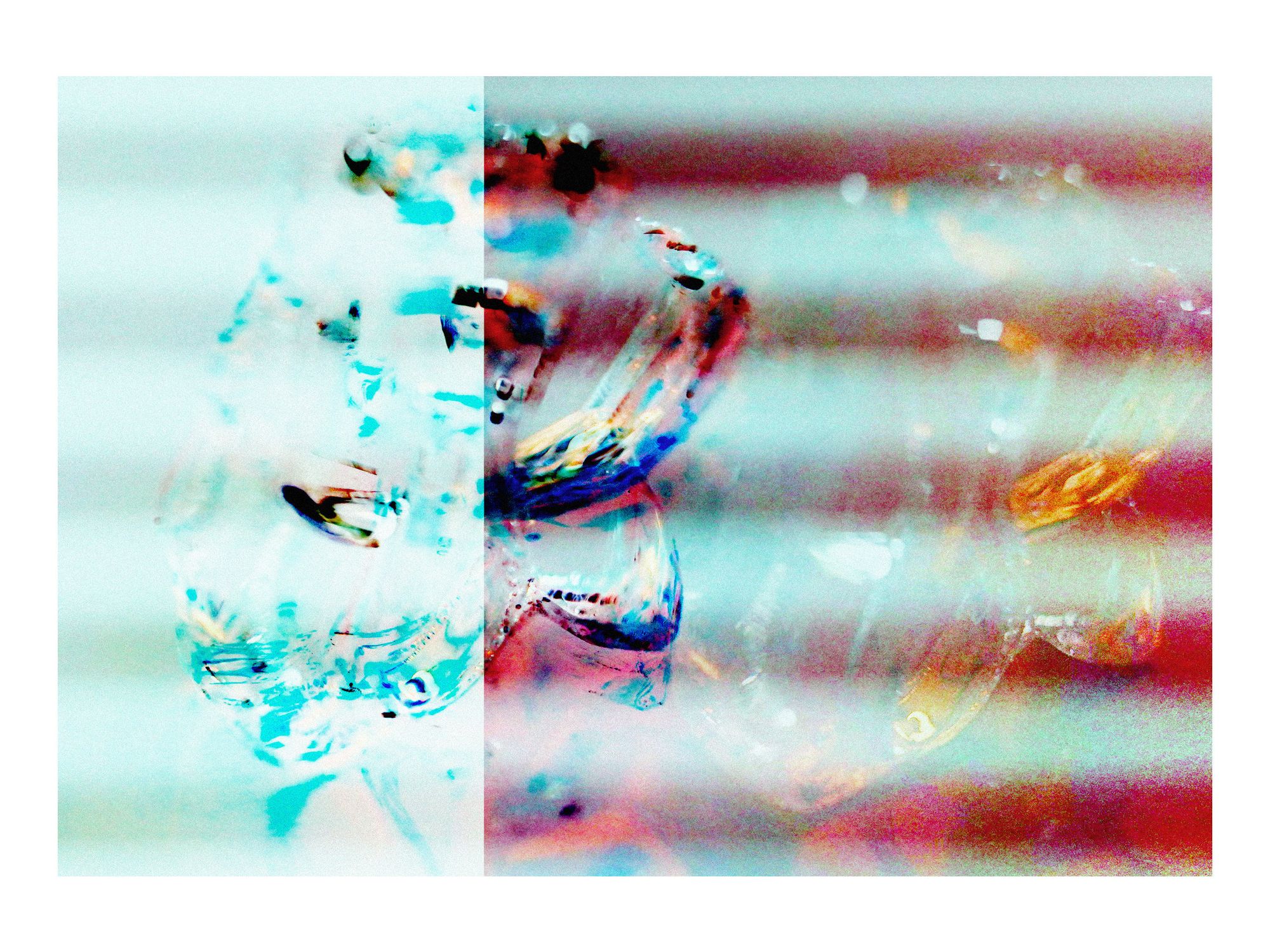
poor man's render ii (available here as an 1/1 objkt in Hicetnunc):
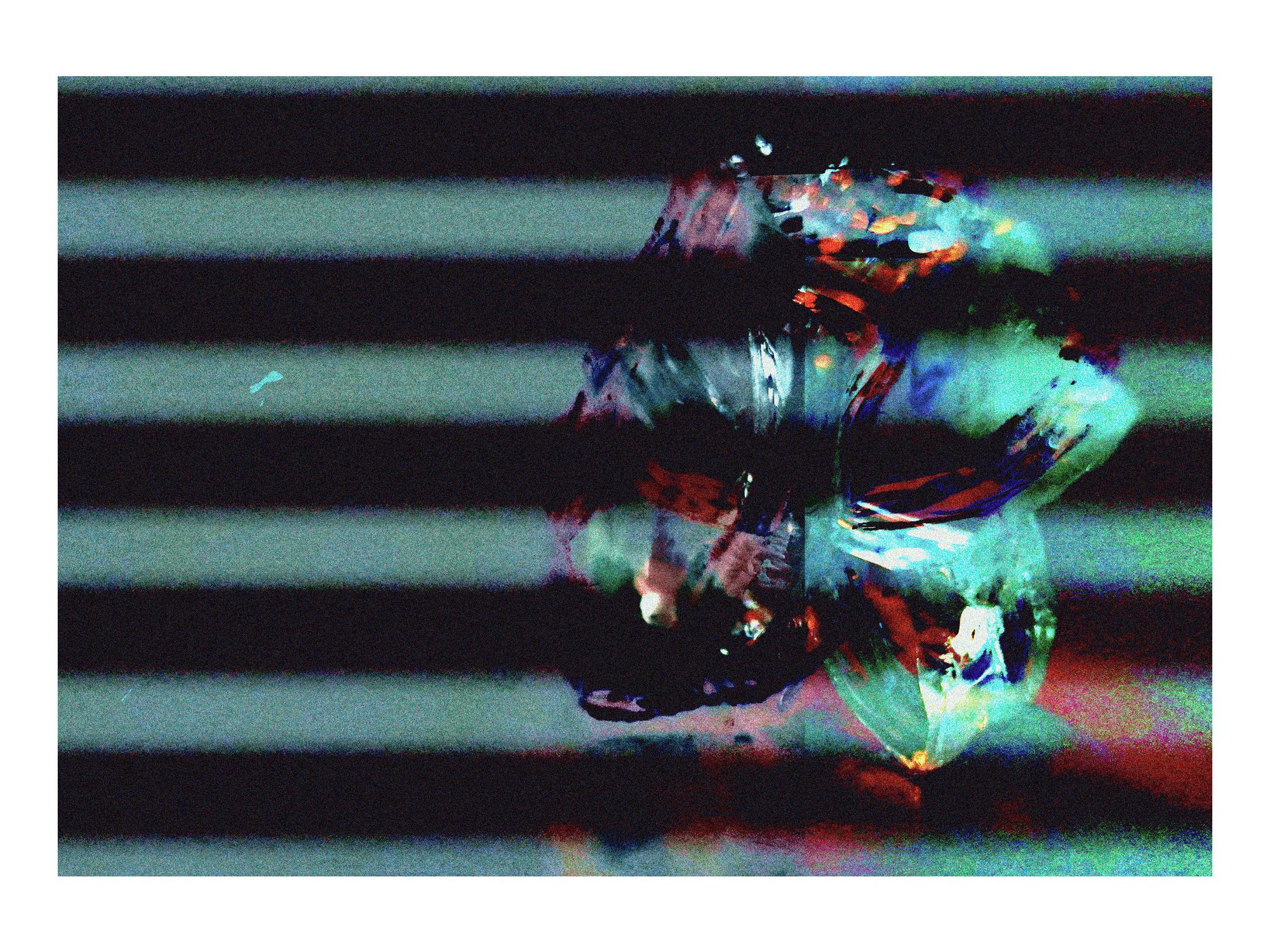
poor man's render iii (available here as an 1/1 objkt in Hicetnunc):
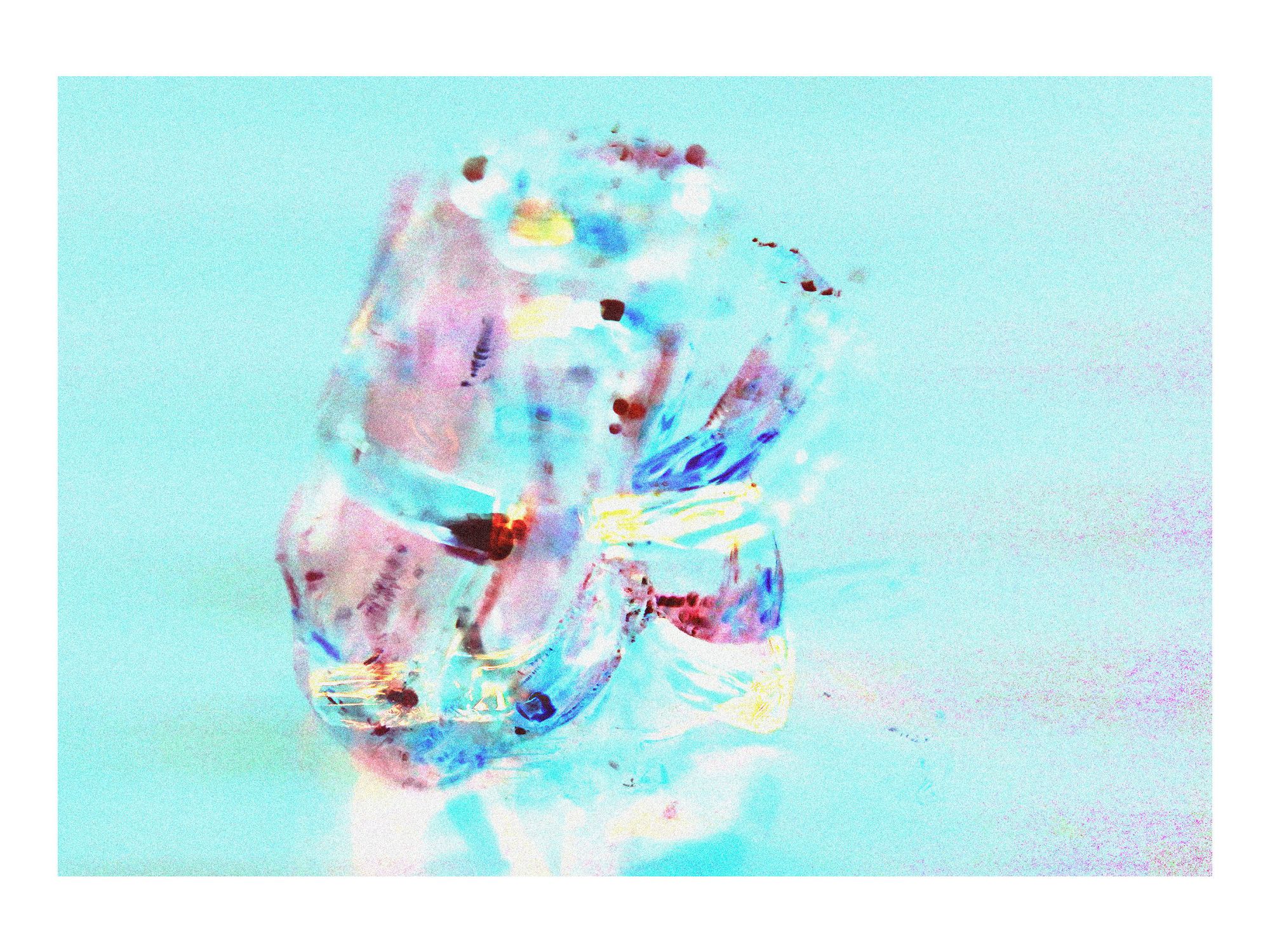
poor man's render iv (available here as an 1/1 objkt in Hicetnunc):
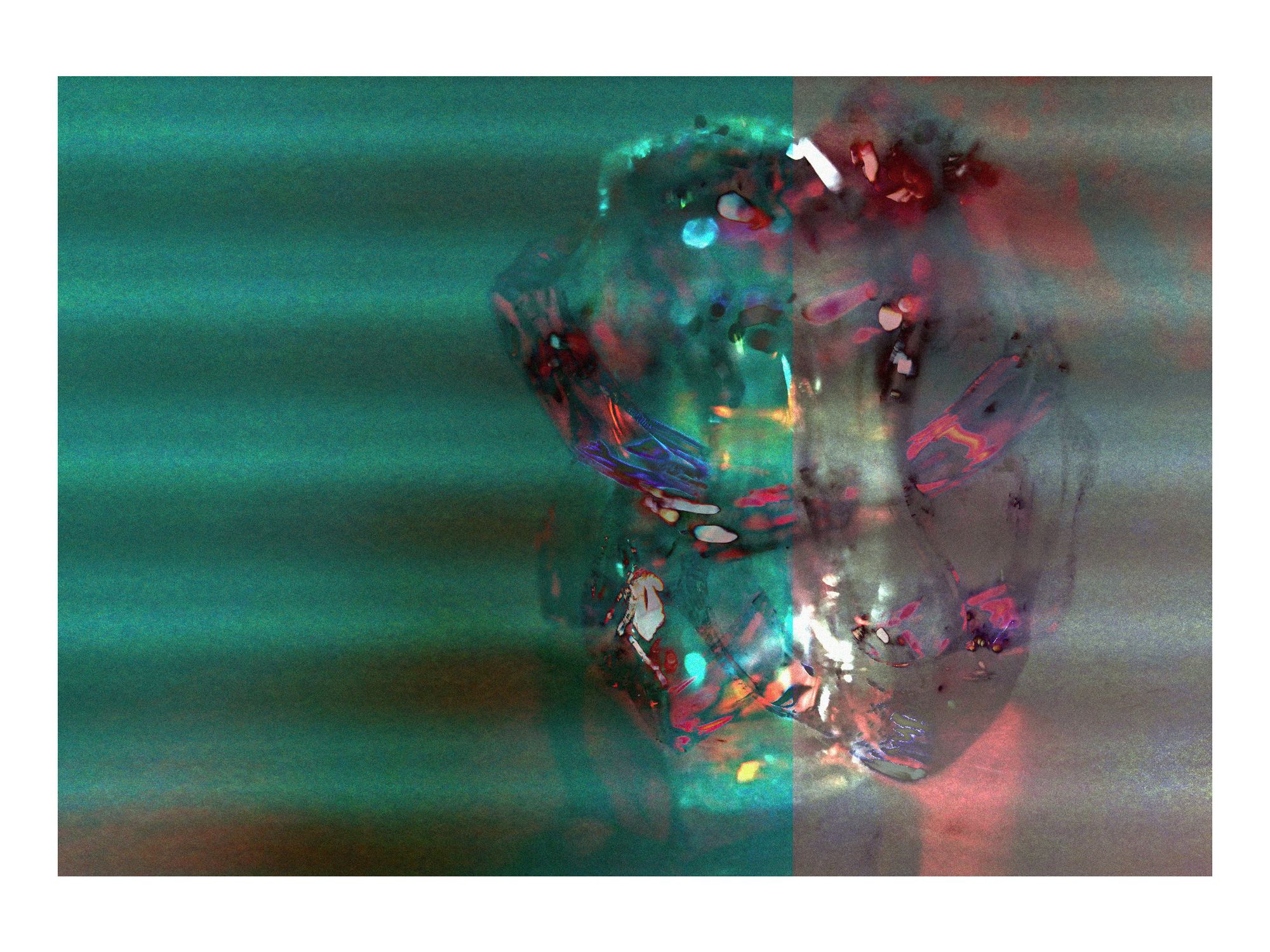
I found quite pleasing the lightning effects that appear when combining different frames of the animation and using varying blend modes. Some details that were happy findings:
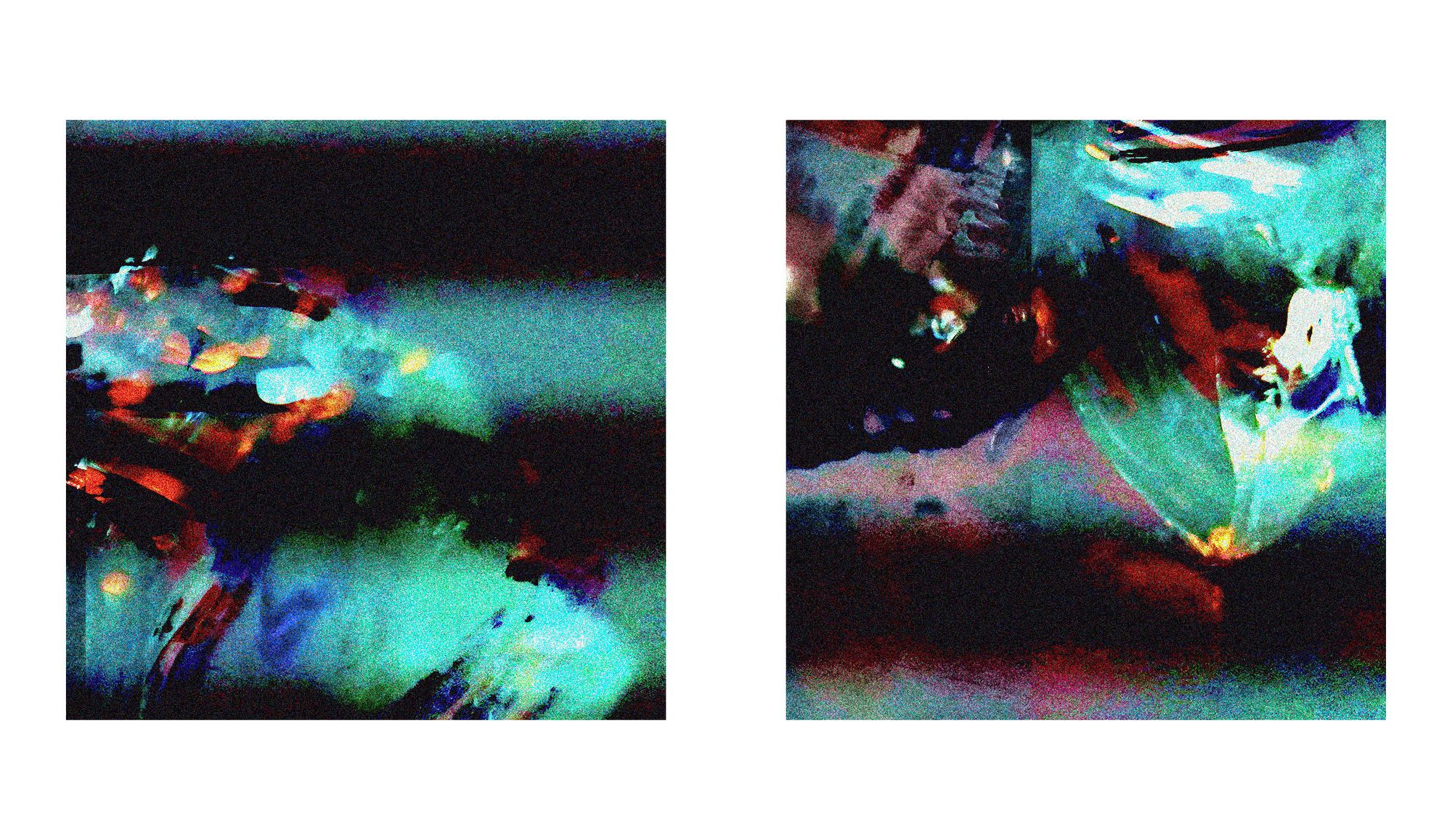
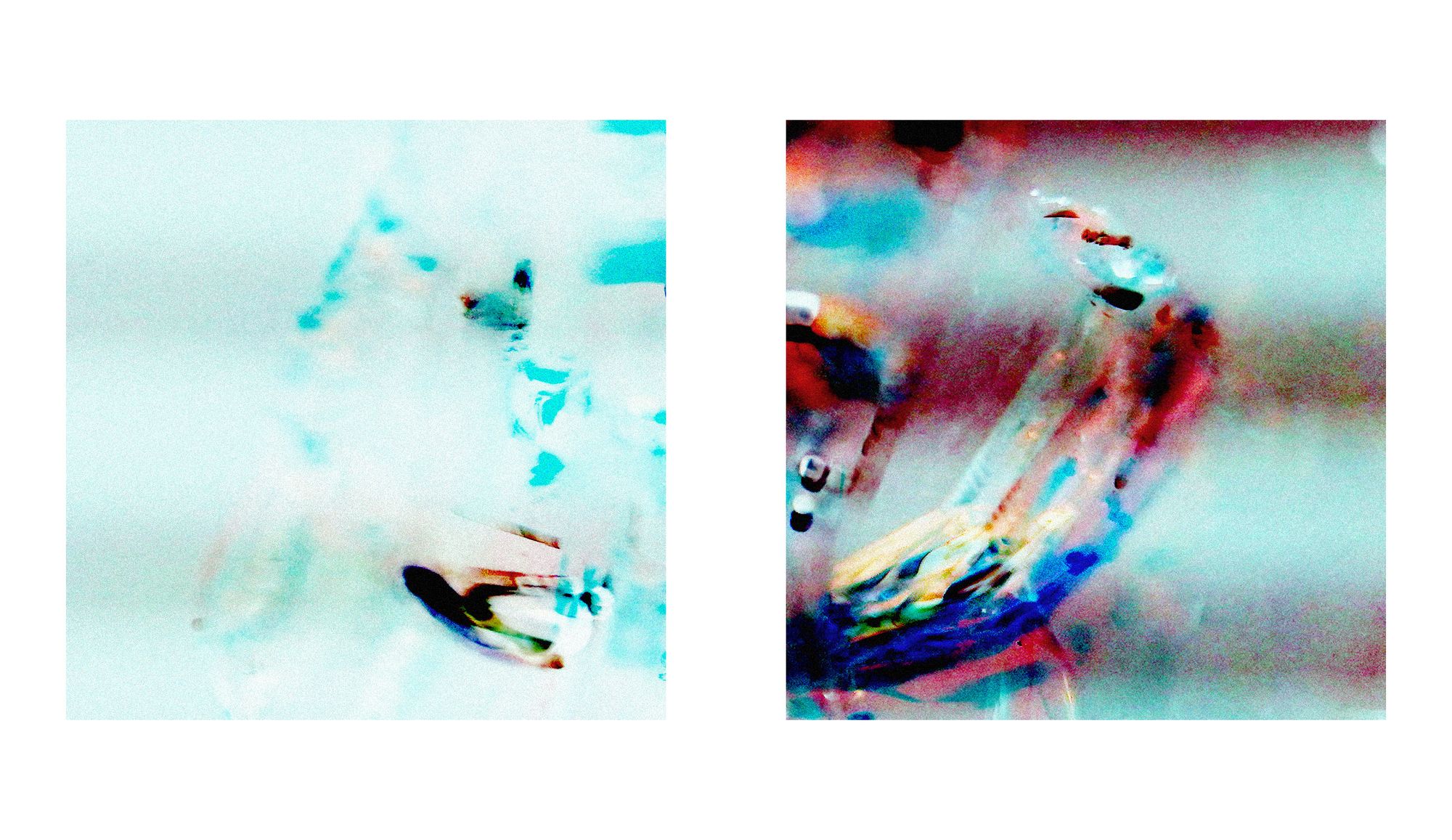
Finally, the video piece with original music: a looping piece which can make you go nuts if you listen to the music constantly.
poor man's render: a crystal glass dance (available here as an edition of 10 in Hicetnunc):
(poor man's render: a crystal glass dance, artwork by Marcelo Soria-Rodríguez)
As a final note, I approach these explorations with a question in the back of my mind. We as humans try to evolve our practice, to delve into the new, to explore, perhaps guided by survival, by the need to adapt, the need to keep pushing forward. I wonder what will the explorations that our AIs initiate look like. The art that we make with them is, as I wrote in a previous article, guided by us humans, not by any machine-born intention. Currently we can make machines explore a solution for a problem and it's their exploration, but always bound by a given mandate that we humans make (which by the way typically has to do with optimizing some problem instead of actually exploding the set of possibilities for the sake of exploration; I will be writing about this optimization vs. adaptation thing in a different piece. Soon. Maybe). Will we get to the point where machines have the freedom to really explore something because it's interesting to them? Will they try to recreate the things they "see"?
On the meantime, I'll keep doing my little experimental artworks. I hope you like this series.